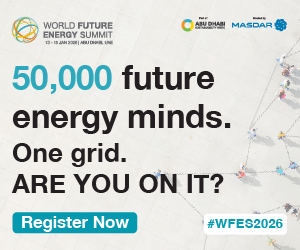Post - Articles
ABB and Fortum to develop large-scale smart grid
- 16 years ago (2009-11-16)
- David Flin
ABB has announced that it will work on a joint development project with Fortum to design and install a large-scale smart grid in a new district of the city of

WFES 2026 (World Future Energy Summit)
The R&D project will test the concept of a flexible, low emission power network in the Stockholm Royal Seaport area as part of a larger initiative to cut emissions in the Swedish capital by two thirds by 2020. It is one of 16 global projects supported by the Clinton Climate Initiative Programme for sustainable urban growth with a focus on sustainable and efficient generation, transmission and distribution of power.
ABB and Fortum will develop a variety of solutions to ensure that excess power generated from renewable energy sources in the district itself from sources such as rooftop solar panels can be fed into the power grid; to enable electric vehicles to draw electricity from the grid or feed it back in, to store energy and to provide more flexibility and transparency in the distribution grid, helping to lower consumption and emissions.
Bazmi Husain, Head of ABB’s smart grids initiative, said: “In terms of scale, this is a big step forward in the development of a smarter and more flexible urban grid that can integrate distributed and renewable energy sources and help realize the vision of sustainable cities.”
The new development is an integral part of
ABB has said that it envisions a smart grid based on industry wide standards supporting a stable, secure, efficient and environmentally sustainable power system. It will also accommodate customer demand response management systems that allow local producers and consumers to interact with the network operator and the energy market to reduce peak loads and increase efficiency.
